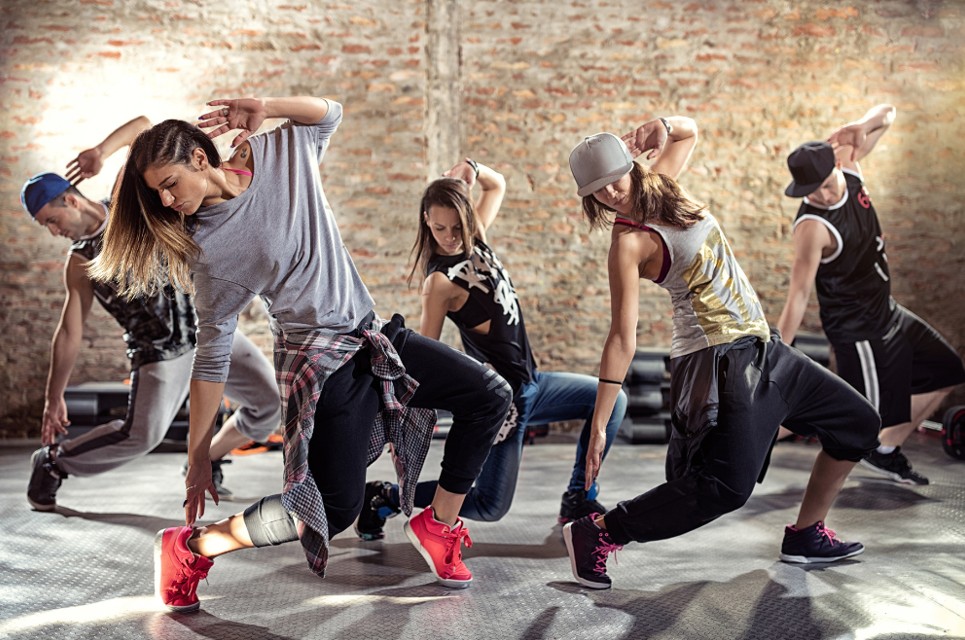There’s a reason TikTok feels like a crowded dancefloor: rhythm binds attention, repetition teaches muscle memory, and visual beats make trends contagious. If you want your brand to move on that floor, think less about polished ads and more about choreography — not just in bodies, but in color, cut, timing, and the little graphic flourishes that punctuate a beat. Kick things off by sketching mood frames and lighting tests with an AI photo generator to audition textures and camera treatments before you book dancers or a director. Dreamina speeds up that sketch-to-screen idea loop, letting you hear the rhythm before you choreograph the first step.
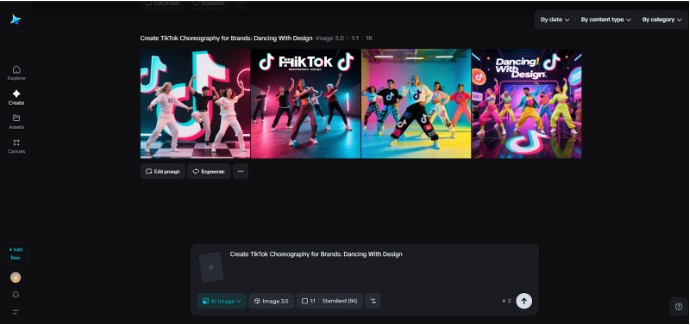
This post explores how brands can build choreography into every axis of content design: the value of a signature move, how to score visuals to sound, frameworks for remixable assets, and a rigorous Dreamina process to create your initial loop prototype. Expect a playful mix of narrative, short lists, and concrete examples you can try this afternoon.
The signature move: design’s equivalent of a viral step
On TikTok, a single recognizable motion fuels dozens of remixes. Brands need a signature move that can be performed by anyone, anywhere, and still read like your DNA. It might be:
- A simple hand gesture that frames your product
- A three-frame cut where the logo blooms, a color plate flips, and text snaps into place
- A camera trick (whip pan, jump cut) that always lands on the same compositional kiss point
Try Dreamina’s AI logo generator for a short time to identify tiny, animation-friendly markings that withstand enormous downscaling and quick motion if you want thin, flexible emblems for on-screen use and small-scale printing.
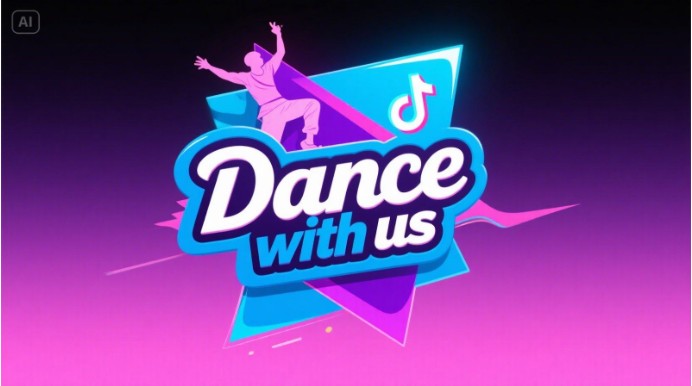
The move should be logistically tiny — easy to learn — but visually specific enough that when creators copy it, viewers mentally tag the brand. The easiest signature moves are modular: they can be slowed, sped up, or reversed without losing identity.
Scoring visuals to beats: the rhythm map
Choreography on TikTok is a marriage of sound and sight. Before you shoot, make a rhythm map: mark timestamps where a hit should correspond to a visual event. Treat your content like a musical score.
- 0.0–0.5s: hook — a bold color flash or micro-zoom
- 0.5–1.2s: reveal — the main action or product appears on the beat
- 1.2–2.0s: payoff — text or emblem anchors the tagline
This micro-structure keeps edits tight. When creators use your sound, their instinctive cuts will match your map and make UGC feel cohesive.
Visual vocabulary: motifs, palettes, and props
Develop a concise visual language that facilitates remixing. A lexicon could include a palette (one pop color + two neutrals), a prop or costume element, an emblem animation, and two compositional rules (e.g., always center the subject on the third beat; always use a wide negative-space border). Use motifs to help creators remix while staying recognizably your campaign.
- Motif: neon band that wipes across the frame
- Palette: coral pop, slate base, chalk accent
- Prop: branded tote that folds into the pocket of the shot
Keep the lexicon small — constraints breed creativity.
Micro-templates: design assets built for remix
Give creators assets that are easy to drop into edits. Offer:
- 1–2 second logo loops with transparent backgrounds that play on beat
- Pre-installed lens flares and colour wipes that are synchronised with popular sound effects
- Vertical-safe lower-thirds that snap in and out on the second beat
These micro-templates reduce editing friction and encourage brands and fans to build on the same beats.
Director’s notes for creators (keep it playful, keep it real)
When you brief creators, translate choreography into casual language. Avoid technical jargon; say “pop on the second clap” instead of “place entrance at 0:58.” Offer visual references and two optional constraints: one mandatory (the signature move) and one permissive (choose any prop from the kit).
A short clarifying list helps:
- Do the signature move between beat 2 and beat 4
- Keep the background uncluttered during the reveal
- Use brand color as a blink or wipe, not as the whole frame
These soft rules keep work on-brand without strangling originality.
Remix culture as distribution engine
The magic of TikTok is iterative replication. When a brand seeds a well-designed challenge — a clear signature move, a catchy sound, and a tiny asset kit — remixers surface unexpected, viral versions. Your role is to make remixing frictionless: provide clean stems, caption suggestions, and a pack of vertical-safe overlays.
Celebrate remixes publicly: stitch the best ones into a weekly roundup, and share creator credits. This acknowledgement signals that the brand isn’t just broadcasting — it’s co-creating.
Turning trends into long-form ecosystems
A single viral dance should feed a larger ecosystem. Use the signature move as a motif in longer content: product demos, how-to’s, or founder stories that reuse the same beat as an editing flourish. Over time, the move becomes the connective tissue across formats and platforms.
Scaling design into IRL and merch
Bring choreography into real-world touchpoints. Use the motion in window displays, staff greetings, or event activations. For physical merch, extract the key frame of the movement and turn it into a small icon set. Consider limited-run stickers that depict the move in three-frame sequences; Dreamina’s sticker maker can help you prototype tactile merch that fans can place on laptops and water bottles, reinforcing the campaign’s portability.
The loop lab: Dreamina’s quick choreography fit
Step 1: Create a text prompt
Go to Dreamina and set the mood, motion, and output sizes. Set the color firmly, the tempo, and where to place the reveal.
For instance: Design three visual ideas for a 2-second TikTok logo reveal: playful pop, 96 BPM tempo, coral wipe, soft grain texture.
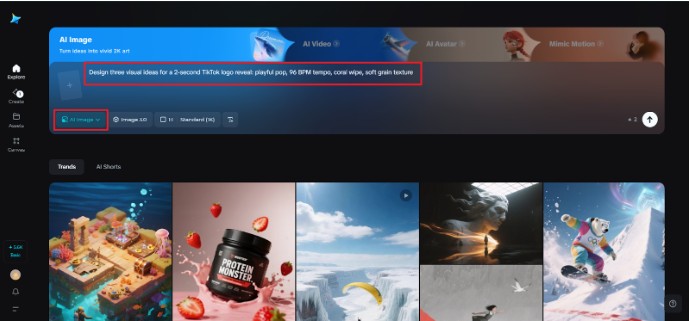
Step 2: Fine-tune parameters and generate
Choose a model fine-tuned for texture and motion-friendly edges, specify aspect ratio to vertical video and square thumbnail, select size and resolution—1k for fast drafts, 2k for production-quality frames—and click Dreamina’s icon to create a batch of directions to test.
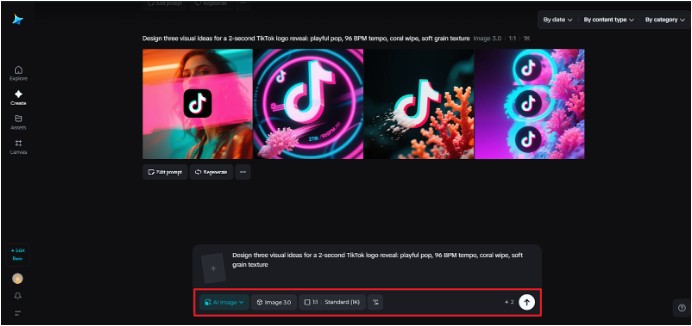
Step 3: Personalize and download
Use Dreamina’s inpaint to clean up anchor space, grow to make bleed-friendly assets, remove stray artifacts, and retouch color and contrast for good legibility at small sizes. Once the visual rhythm is good, click Download and export layered PNGs and short loop frames for editors.
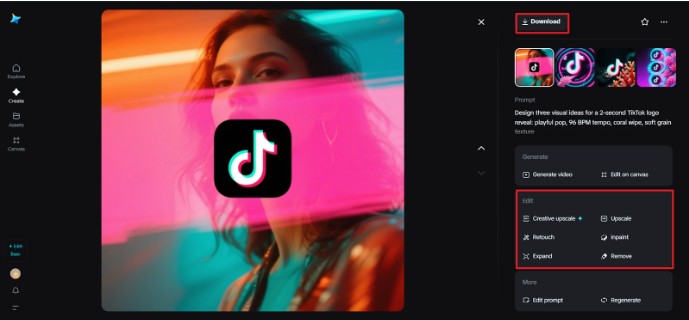
Testing, iteration, and community listening
Roll your choreography out in phases: seed the sound and asset pack to a small cohort of creators, measure engagement and remix rates, then widen the release. Listen for emergent variations that feel on-brand and amplify them. Track not just views, but creation velocity: are people making novel takes, or only watching? High creation velocity means your choreography is danceable.
Closing cadence
TikTok choreography for brands is design thinking in motion. It asks you to compress strategy into a tiny performable ritual: a signature move, a palette, and a beat map. Dreamina helps you hear and see that ritual early so you can iterate before the shoot day.
When brands design like choreographers—giving clear cues, small kits, and room for remix—they don’t just advertise on TikTok; they start a dance that anyone can join. Put on the sound, set the tempo, and let the brand move.
